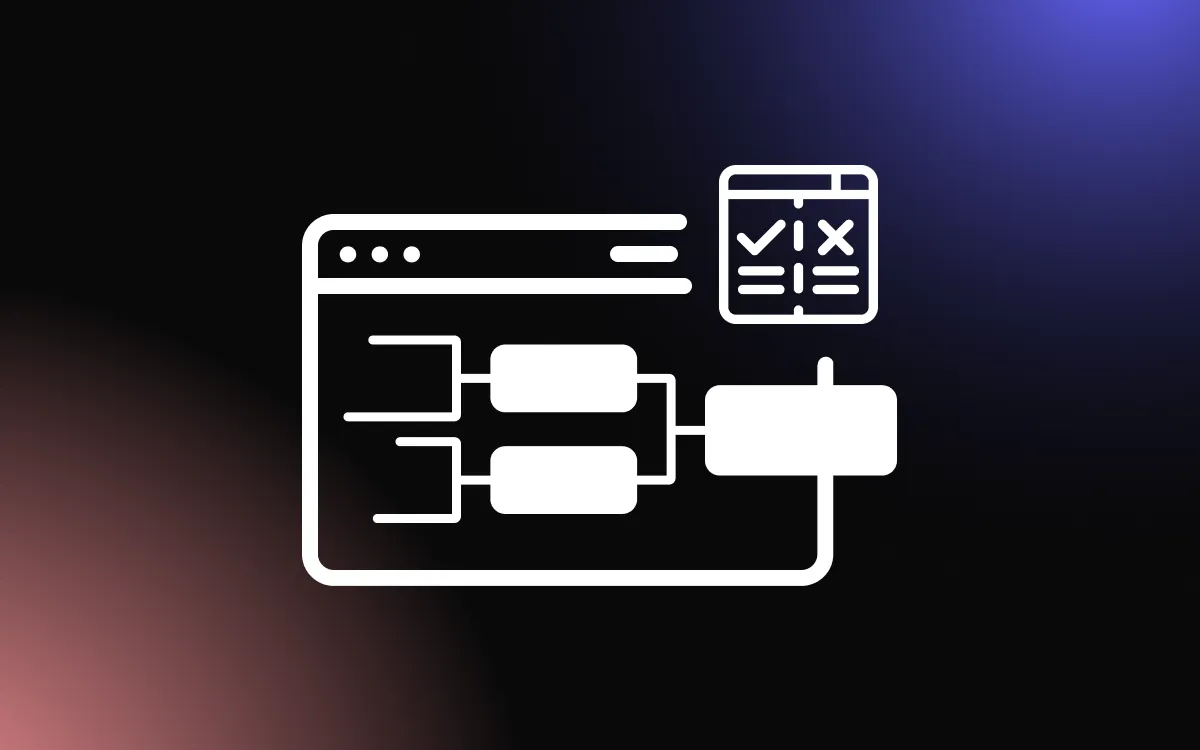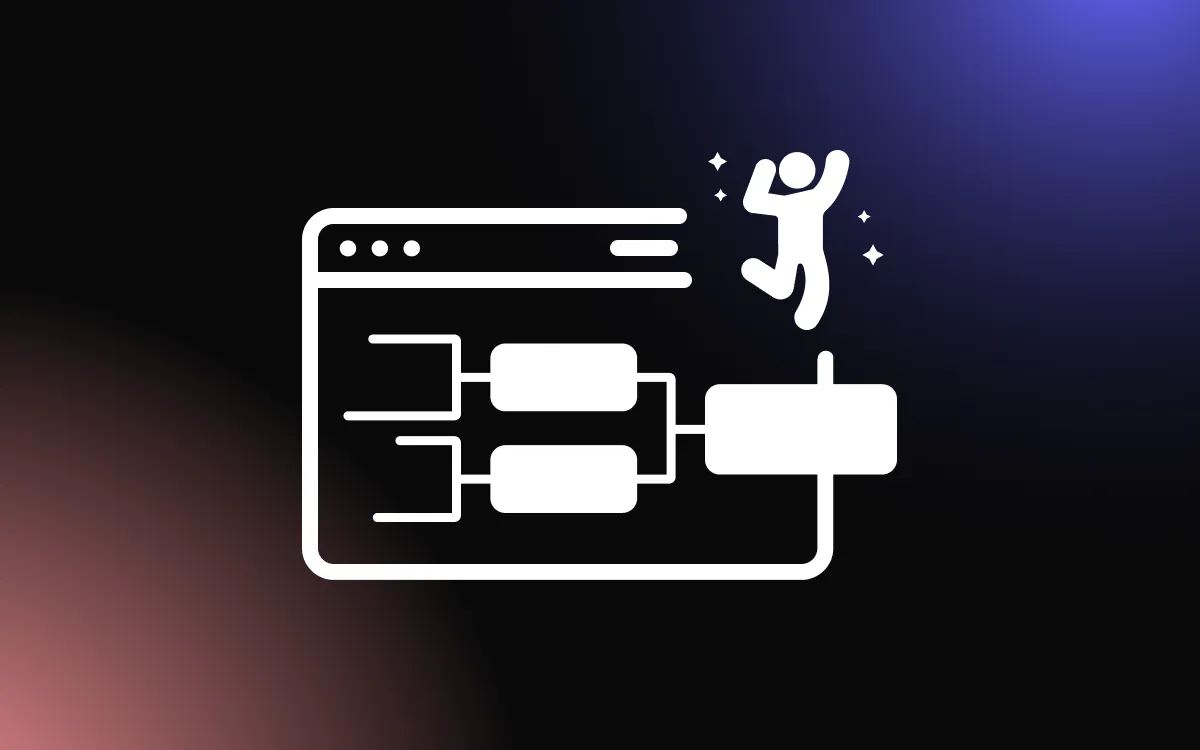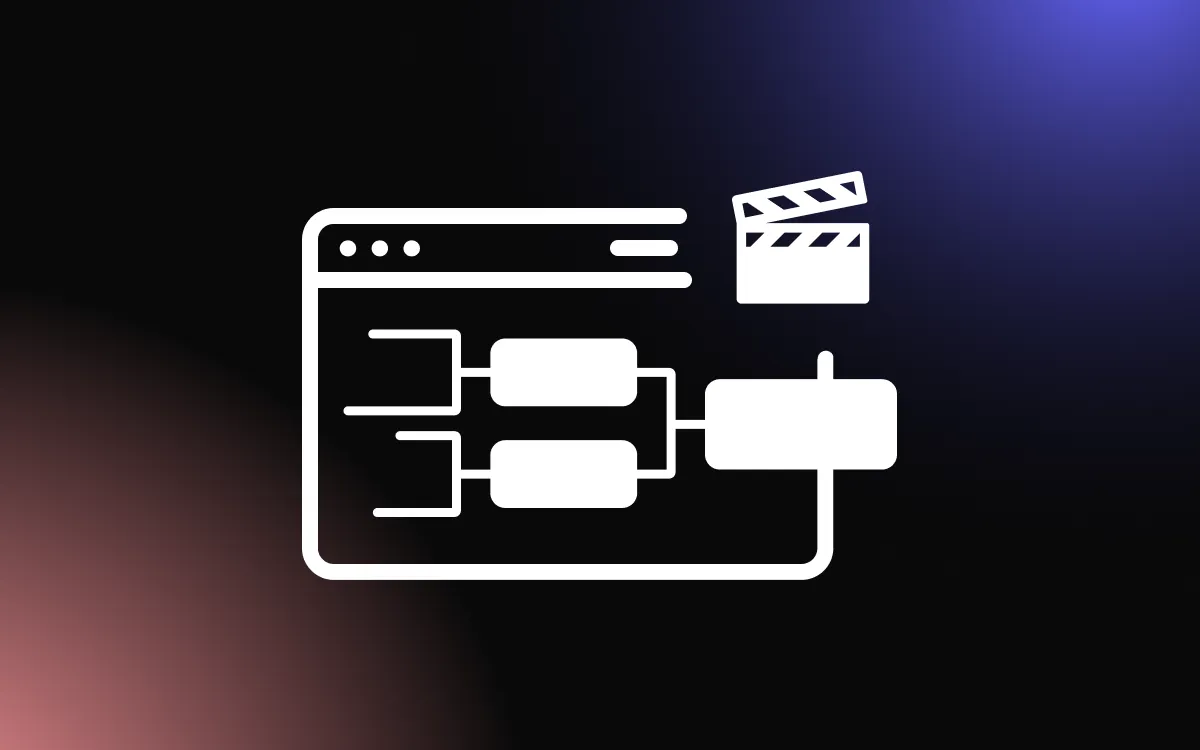
Bracket predictions have become a beloved tradition in many competitive events, from sports tournaments to entertainment award shows. The allure of predicting outcomes, the thrill of unexpected upsets, and the satisfaction of a correct guess make brackets an engaging activity for fans and enthusiasts alike.
However, while some might rely on gut feelings or personal biases, there are proven strategies and tools that can increase the accuracy of bracket predictions.
In this article, we'll delve into the art and science of making educated guesses, offer insights and tactics to enhance your bracket-predicting prowess, and suggest the best prediction bracket-making tool available.
The Art of Bracket Predictions
The Appeal of Bracket Predictions
Bracket predictions have become an integral part of many competitive events, captivating audiences worldwide. The allure of predicting the outcomes of matches, and ultimately the winner of a tournament, adds an extra layer of excitement and engagement for fans. It's not just about the thrill of competition but also the personal challenge of forecasting the unpredictable.
The satisfaction derived from a correct prediction, especially against the odds, taps into the human desire for validation and the joy of being right.
Factors Influencing Outcomes
Predicting the outcomes of matches in a bracket is a complex task, influenced by a myriad of factors. The current form and historical performance of the participants, injuries, team dynamics, and even external factors like weather conditions in outdoor sports, can play a significant role in determining results.
Moreover, the psychological aspect of competition, such as the pressure of high-stakes matches or past rivalries, can also sway outcomes in unexpected directions. A successful bracket prediction often requires a deep understanding of the sport or game, meticulous research, and a keen eye for details that might escape the casual observer.
The Balance Between Knowledge and Intuition
While knowledge and research are undeniably crucial in making informed bracket predictions, there's also an element of intuition involved. Sometimes, gut feelings or hunches, based on subtle cues or patterns observed over time, can prove to be surprisingly accurate.
This balance between knowledge and intuition is what makes bracket predictions an art as much as a science. It's about combining hard facts with soft insights, blending the analytical with the instinctual. And while no prediction method is foolproof, the journey of making these forecasts, with its mix of hits and misses, adds a rich dimension to the experience of following a tournament, making it all the more enthralling.
Deep Dive into Research
Analyzing Team/Player Histories
A comprehensive understanding of team or player histories is fundamental when diving deep into research. This involves examining past performances, achievements, and patterns over extended periods. For teams, it's essential to consider changes in team compositions, coaching staff, and strategies over the years.
For individual players, factors like age, experience, past injuries, and career trajectory play a significant role. Analyzing these histories provides a backdrop against which current performances can be evaluated, offering insights into consistency, adaptability, and growth. It also sheds light on how teams or players fare under different conditions, challenges, and pressures, painting a holistic picture of their capabilities.
Recent Performance Metrics
While historical data provides context, recent performance metrics offer a more immediate and relevant perspective on the current state of a team or player. These metrics encompass various aspects, from scores, win-loss ratios, and rankings to more nuanced statistics like player efficiencies, average response times in games, or specific skill-based metrics relevant to the sport or game in question.
Recent performances are particularly telling as they reflect the current form, morale, and health of the participants. They can indicate momentum, highlight strengths and weaknesses, and provide clues about potential strategies and tactics that might be employed in upcoming matches.
Head-to-Head Comparisons
One of the most insightful aspects of research is head-to-head comparisons. These involve analyzing past encounters between the teams or players in question. Such comparisons provide valuable insights into how they match up against each other, taking into account their styles, strengths, and vulnerabilities.
For instance, a team or player might have an excellent overall record but consistently struggle against a particular opponent due to stylistic clashes or psychological factors. Understanding these dynamics can be crucial in predicting outcomes, especially in closely contested matches.
Additionally, head-to-head data can reveal patterns or tendencies that emerge in these encounters, offering hints about potential game plans, strategies, and key areas of contention in future matchups.
Recognizing Patterns and Trends
Common Upsets in Past Tournaments
One of the intriguing aspects of competitive events is the occurrence of upsets, where underdogs triumph over favored opponents. By analyzing past tournaments, researchers can identify patterns that lead to these unexpected outcomes. Factors such as overconfidence in top-seeded teams, underestimation of lower-seeded teams, or specific matchup dynamics can often play a role.
Recognizing these patterns allows for better predictions and a deeper understanding of the unpredictable nature of competition.
Momentum and Streaks
Momentum plays a crucial role in competitive events. Teams or players on winning streaks often carry a psychological edge, bolstered by confidence and a positive mindset. Conversely, those on losing streaks might struggle with morale and self-doubt.
Recognizing these streaks and understanding their impact can provide valuable insights into future performances. It's essential to consider not just the length of a streak but also the quality of opponents faced and the nature of the victories or losses. A team that has narrowly won against weaker opponents might not be as formidable as their streak suggests.
Identifying Dark Horses
Every tournament often has its "dark horses" – teams or players not initially considered strong contenders but who outperform expectations. Recognizing these potential dark horses involves looking beyond surface-level statistics.
Factors such as recent improvements, changes in team dynamics, or strategies, and past performances against stronger opponents can hint at their potential to surprise. Identifying dark horses early on can offer a competitive edge in predictions and analyses, showcasing the depth and unpredictability of the competition.
The Role of Seeding
Understanding Seeding Logic
Seeding is a fundamental aspect of many competitive tournaments, designed to ensure a fair and balanced competition. The logic behind seeding is to rank teams or players based on their past performances, achievements, or other relevant metrics.
This ranking determines the initial matchups in a tournament, with higher-seeded participants typically facing off against those with lower seeds. The primary goal is to ensure that the strongest contenders do not meet in the early stages, allowing for potentially more exciting and competitive final rounds.
Potential Pitfalls of Over-relying on Seeds
While seeding provides a structured approach to organizing tournaments, over-relying on it can lead to certain pitfalls. Seeds, being based on past data, might not always accurately reflect the current form or potential of a team or player.
There's also the risk of underestimating lower-seeded participants, leading to unexpected upsets. Overemphasis on seeding can also create a psychological burden on higher-seeded participants, who might feel the pressure of living up to their ranking, while lower seeds might play with a "nothing to lose" mindset, potentially giving them an edge.
Instances When Lower Seeds Shine
History is replete with instances where lower-seeded teams or players have outshone their higher-ranked counterparts. These moments stand out not just for the surprise they bring but also for the narratives they create.
Whether it's a young player making a mark in their debut tournament or a team that has overcome challenges to peak at the right moment, these instances highlight the unpredictability of competition. Such moments underscore the idea that while seeding provides a framework, the actual outcomes are determined by a myriad of factors, including determination, strategy, and sometimes, a touch of luck.
Leveraging Expert Opinions
Sources for Expert Bracket Predictions
In the realm of competitive tournaments, expert opinions are invaluable resources for enthusiasts and analysts alike. These experts, often with years of experience and deep knowledge of the sport or game, provide insights that can be pivotal in understanding the nuances of the competition.
Their bracket predictions can be sourced from various platforms, including sports networks, dedicated websites, podcasts, and even social media channels. Renowned analysts, former players, and seasoned commentators often share their predictions, backed by data and their unique perspectives, offering a comprehensive view of the tournament's potential outcomes.
Commonalities and Divergences Among Experts
While leveraging expert opinions, it's intriguing to note the commonalities and divergences in their predictions. Commonalities often highlight clear favorites or trends that are evident to most seasoned observers. These consensus picks can provide a solid foundation for any bracket prediction.
On the other hand, divergences among experts are equally fascinating. They shed light on potential upsets, dark horses, or simply different interpretations of available data. These divergent opinions can be particularly valuable, offering alternative viewpoints and encouraging a more holistic analysis of the tournament.
Filtering Bias from Expert Insights
As valuable as expert opinions are, it's crucial to recognize and filter out potential biases. Every expert, no matter how seasoned, carries personal biases—be it a preference for certain teams or players, regional affiliations, or past experiences that might color their judgment.
Being aware of these biases allows for a more objective assessment of their insights. Cross-referencing predictions from multiple sources, understanding the rationale behind each pick, and maintaining a healthy skepticism can help in distilling genuine insights from mere preferences or biases.
Intuition and Gut Feelings
The Role of Instinct in Predictions
In the intricate dance of predictions and analyses, instinct often plays a surprisingly pivotal role. Beyond the realm of hard data and statistics, there's an intangible element of "feeling" that many enthusiasts and experts alike rely upon.
This instinct, or gut feeling, is an amalgamation of subconscious observations, past experiences, and inherent understanding of the game or sport. It's that inexplicable hunch that a certain team might outperform expectations or a belief that an underdog has the potential to surprise, even when data might suggest otherwise.
When to Trust Your Gut
Trusting one's gut is an art in itself. While it's tempting to always lean on data, there are moments when intuition can provide valuable insights. Situations where data is inconclusive, or when teams or players are evenly matched, are instances where gut feelings can tip the balance.
Additionally, in dynamic environments where recent changes—like a team's strategy shift or a player's sudden rise in form—might not be fully reflected in historical data, intuition can serve as a guiding light. However, it's essential to differentiate between genuine instinct and mere biases or preferences.
Balancing Intuition with Data
While intuition has its merits, it's crucial to strike a balance with data-driven insights. Relying solely on gut feelings can lead to oversight of critical factors and potential misjudgments.
Data offers an objective perspective, highlighting trends, patterns, and performance metrics that can validate or challenge intuitive beliefs. The most effective predictions often emerge from a harmonious blend of intuition and data, where gut feelings are grounded in facts, and data is viewed with a discerning, instinctive eye.
The Best Prediction Bracket Maker

In the world of sports, gaming, and competitive events, predicting outcomes is more than just a game — it's an art. Whether you're a die-hard fan, a casual observer, or a competitive participant, having the right tools to create and manage your predictions is crucial. Enter the ultimate solution: Common Ninja's Bracket Widget.
This widget stands out as the best prediction bracket maker available today. With its user-friendly interface, customizable design, and real-time updates, it offers a seamless experience for both creators and participants. Whether you're hosting a local tournament, a company-wide competition, or just having fun with friends, this widget ensures that your prediction game is on point. Don't just take our word for it—try it out for yourself and elevate your prediction experience to the next level!
Embracing Uncertainty
The Unpredictable Nature of Tournaments
Tournaments, by their very nature, are rife with uncertainty. No matter how much data is analyzed or how many expert opinions are considered, the outcome of a match can hinge on a myriad of unpredictable factors.
A sudden change in weather, an unexpected injury, or a moment of brilliance from an underdog can turn predictions on their head. This inherent unpredictability is what makes tournaments so captivating. It reminds us that, in the world of competition, there are no guarantees, and anything is possible.
Enjoying the Process Over Perfection
Given the uncertainties, it's essential to shift the focus from achieving perfect predictions to enjoying the process itself. The journey of analyzing data, engaging in discussions, formulating strategies, and making predictions is where the true joy lies. It's about embracing the challenges, celebrating the successes, and learning from the misjudgments.
After all, the thrill of tournaments is not just in the outcome but in the twists and turns that lead to the final result. By valuing the journey over the destination, one can truly appreciate the nuances and intricacies of the competitive landscape.
Continuous Learning and Adaptation
Uncertainty, while challenging, also offers opportunities for growth and learning. Every unexpected outcome provides insights into areas of oversight or new trends emerging in the competitive scene.
By adopting a mindset of continuous learning, enthusiasts can refine their predictive strategies, adapt to changing dynamics, and enhance their understanding of the game or sport. It's about recognizing that perfection is elusive, but improvement is always within reach. By being open to feedback, learning from mistakes, and staying curious, one can navigate the uncertainties with grace and resilience.
Conclusion
In the world of brackets, no prediction strategy guarantees absolute success, given the unpredictable nature of competitions and human performance. However, by combining data-driven analysis with a keen understanding of the competition landscape, one can significantly improve their odds of making accurate predictions. It's essential to approach bracket predictions with a mix of research, logic, and a touch of intuition.
Remember, while the goal is to predict accurately, the journey of analyzing, guessing, and watching the outcomes unfold is where the true enjoyment lies. So, as you apply these strategies to your next bracket challenge, relish the process, celebrate your successes, and learn from any missteps. After all, the unpredictability and excitement are what make bracket challenges so captivating!


